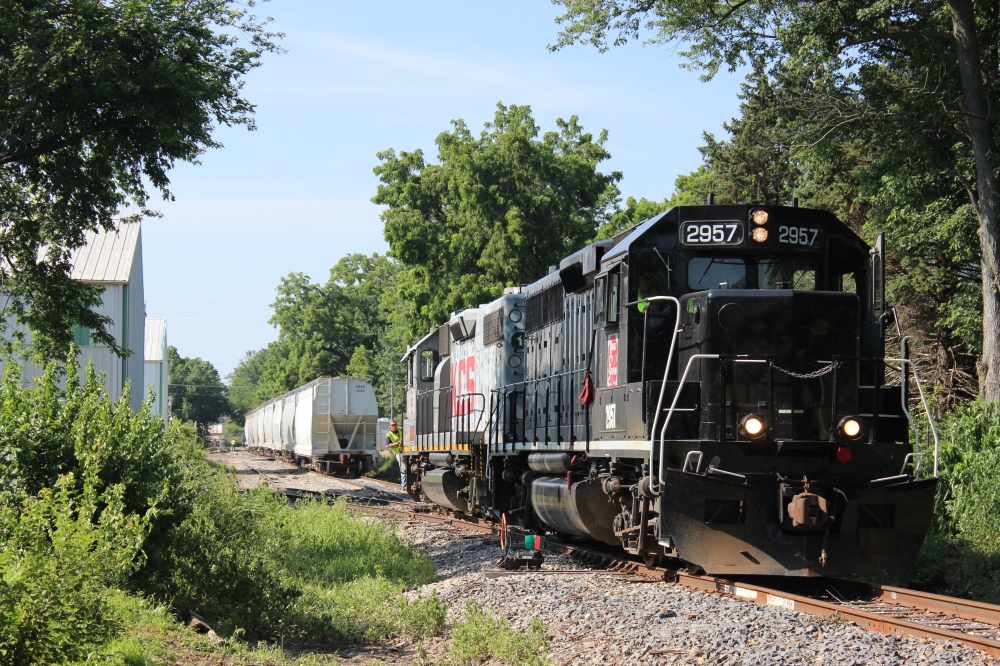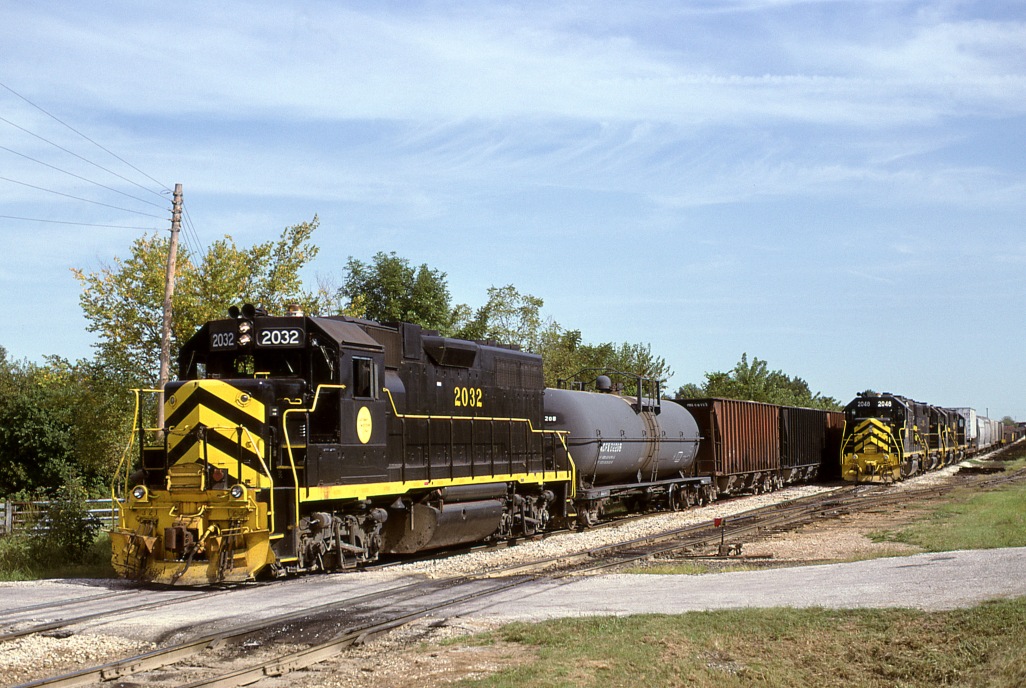Roodhouse, IL was a busy secondary hub for the Gateway Western. In addition to the Roodhouse local, the SLJV/JVSL local and KCSL/SLKC manifests stopped to work the yard. The Santa Fe haulage trains were not supposed to stop, but I have been told that the Gateway might have slipped a car or two onto those trains if needed!
I’ve attached a map given to me by John Kohlberg, who worked for the Gateway. As we look at the map, the top edge is directionally south with line at the bottom exiting north. The area remains unchanged to this day with the exception of the removal of the “New Main” between Simmons and Palm streets. See the below link for a better visual of the area south of Palm St.
https://www.google.com/maps/place/Roodhouse,+IL+62082/@39.4823947,-90.3750289,267m/data=!3m1!1e3!4m2!3m1!1s0x87dfa3553e6deee5:0xa2b140cfbb10acc4

There was no industry directly in Roodhouse, and work was limited to yard duty. However, just south of town there was one Gateway served industry, Greene County Service, which received fertilizer in covered hoppers. The industry was served by a mix of jobs. Sometimes the SLJV would switch Greene County on it northbound journey, but depending on timing, the Roodhouse local or a switcher based in Roodhouse would head south of town to take care of the customer.
Between assignments power would lay over on the New Main just south of the 2 track. On the south end of the complex, switching was performed on the 2 and 3 tracks. The 7 track was predominately used for MOW storage. The north end of Roodhouse saw switching and car storage. The Short 10 was most often used for pickups and setouts. The 12 and 15 tracks were often used for storage.
On my layout I should be able to include all trackage in Roodhouse with exception of the wye track, which will be omitted to save space since the Kansas City – St. Louis main will not be modeled. The south section will be located on a shelf down a 10ft segment of wall. The north side will curve around onto the 16ft wall, but I am not sure how long I will make the tracks. Roodhouse should keep a single operator busy switching the yard as well as handling pickups and setouts from KCSL and SLKC.
As always, please let me know if you have any questions. I hope to make it up to Roodhouse soon, and will post some current pictures for reference.
 Post merger, KCS makes its way up the Jack Line with a cut of cars for Reynolds (formerly Mobil Plastics) – Photo by Ryan Crawford
Post merger, KCS makes its way up the Jack Line with a cut of cars for Reynolds (formerly Mobil Plastics) – Photo by Ryan Crawford KCS LRH101 runs around its train for the journey back to Roodhouse – Photo by Ryan Crawford
KCS LRH101 runs around its train for the journey back to Roodhouse – Photo by Ryan Crawford
